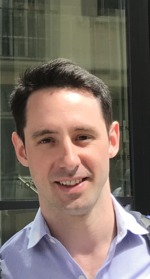Abstract
High Altitude Long Endurance Multidisciplinary Design Optimization of Empennage-Stabilized and Flying-Wing Aircraft
Recent progress in battery technology, solar cell efficiency, and material science have all dramatically improved the feasibility of solar-powered high altitude flight. However, the large number of competing design drivers and couplings makes for a difficult design exercise. For instance, low structural mass fraction allows for high battery mass but typically means lowered structural mode frequencies and potentially unstable aeroelastic modes creeping in the operating envelope. A Multi-Disciplinary Optimization (MDO) framework was therefore developed to fully exploit potential couplings and avoid design pitfalls as early as possible. In order to rapidly and accurately explore the design space, physics-based first principles are emphasized and reliance on historical empirical data is minimized. Low Reynolds number aerodynamics, composite structures, aeroelastic modes, are all captured and corresponding models are validated against higher-fidelity analysis tools. The resulting framework is applied on empennage-stabilized as well as flying wing configurations.
About the Speaker

Mr. Dorian Colas, Facebook
Airframe Technical Team Lead
Mr. Colas currently leads the Facebook Airframe technical team in charge of multidisciplinary vehicle design, aerodynamics, and performance. Prior to Facebook and solar HALE aircraft design, Mr. Colas worked on several UAS programs: At Amazon Prime Air as technical lead and at Aurora Flight Sciences as the chief Aerodynamicist of its DARPA VTOL X-Plane program. After the completion of his Master’s degree in Aeronautics and Astronautics at MIT and his “Diplome d’Ingenieur” from the Ecole Centrale de Paris, he worked at the MathWorks developing fluid network simulation models.



